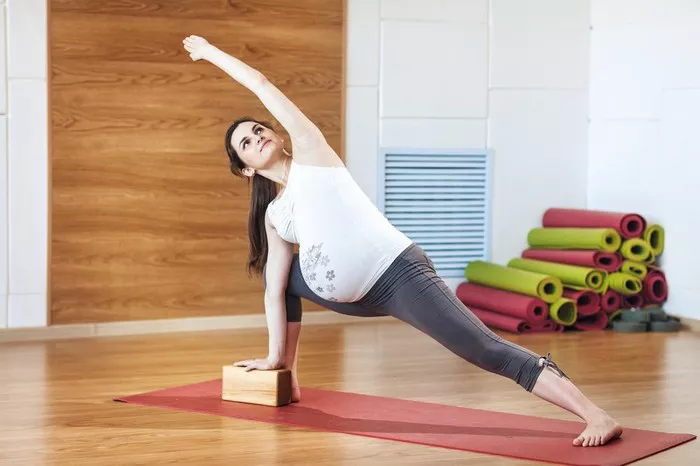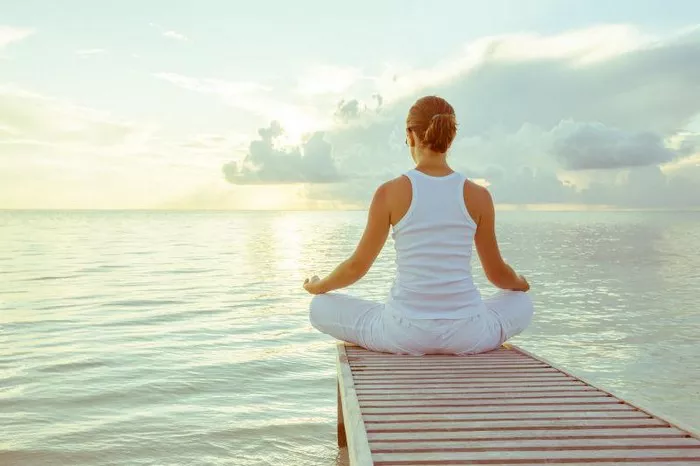Pregnancy is a beautiful journey, but it often comes with its fair share of discomforts, one of the most common being back pain. As the body undergoes significant changes to accommodate the growing baby, the back muscles, and spine can bear the brunt of the strain, leading to discomfort and sometimes even debilitating pain for expectant mothers.
While medication and other forms of treatment may be limited during pregnancy, prenatal yoga offers a safe and effective way to manage and alleviate back pain. With its gentle stretches, strengthening poses, and focus on breath awareness, prenatal yoga can provide much-needed relief while promoting overall well-being for both the mother and the baby.
In this article, we will explore seven prenatal yoga poses specifically designed to target and alleviate back pain during pregnancy. These poses are safe for expectant mothers at various stages of pregnancy and can be easily incorporated into a regular yoga practice. With regular practice, these poses can help improve flexibility, strengthen the muscles supporting the spine, and reduce tension, ultimately leading to a more comfortable pregnancy experience.
1. Cat-Cow Stretch (Marjaryasana-Bitilasana)
The Cat-Cow stretch is a gentle yet effective way to warm up the spine and increase flexibility in the back muscles. It also helps relieve tension in the lower back and promotes relaxation.
To perform the Cat-Cow stretch:
- Start on your hands and knees in a tabletop position, with your wrists directly under your shoulders and your knees under your hips.
- Inhale as you arch your back, dropping your belly towards the floor and lifting your head and tailbone towards the ceiling (Cow Pose).
- Exhale as you round your spine, tucking your chin towards your chest and drawing your belly button towards your spine (Cat Pose).
- Continue to move between Cow Pose and Cat Pose, syncing your breath with each movement, for several rounds.
2. Child’s Pose (Balasana)
Child’s Pose is a restorative pose that gently stretches the spine, hips, and thighs while promoting relaxation and stress relief. It can also help alleviate tension in the lower back and improve circulation.
To perform Child’s Pose:
- Start on your hands and knees in a tabletop position.
- Bring your big toes together and separate your knees wide apart.
- Sit back on your heels and extend your arms forward, lowering your chest towards the floor.
- Rest your forehead on the mat and relax your arms alongside your body or extend them forward.
- Hold the pose for several deep breaths, allowing your spine to lengthen and your lower back to soften.
3. Modified Pigeon Pose (Eka Pada Rajakapotasana Variation)
Modified Pigeon Pose is a gentle hip opener that helps relieve tension in the hips and lower back, making it especially beneficial for pregnant women experiencing back pain.
To perform Modified Pigeon Pose:
- Start in a tabletop position on your hands and knees.
- Bring your right knee towards your right wrist and slide your right foot towards your left wrist, allowing your right shin to rest on the mat.
- Extend your left leg behind you, keeping your hips square.
- If this position feels uncomfortable, you can place a bolster or folded blanket under your right hip for support.
- Hold the pose for several breaths, then switch sides and repeat on the other side.
4. Seated Forward Bend (Paschimottanasana)
Seated Forward Bend is a calming pose that stretches the spine, hamstrings, and lower back while promoting relaxation and stress relief. It can also help alleviate discomfort in the back and hips.
To perform Seated Forward Bend:
- Sit on the floor with your legs extended in front of you and your feet flexed.
- Inhale as you lengthen your spine, then exhale as you hinge forward from your hips, reaching towards your feet.
- Keep your spine long and your chest open as you fold forward, avoiding rounding your back.
- You can use a strap around your feet to help you reach if necessary, or place a bolster or folded blanket on your lap for support.
- Hold the pose for several deep breaths, allowing your spine to lengthen with each exhale.
5. Supported Bridge Pose (Setu Bandhasana)
Supported Bridge Pose is a gentle backbend that stretches the spine, chest, and shoulders while relieving tension in the lower back and hips. Using a bolster or folded blanket for support can make this pose more comfortable and restorative for pregnant women.
To perform Supported Bridge Pose:
- Lie on your back with your knees bent and your feet hip-width apart, flat on the floor.
- Place a bolster or folded blanket under your sacrum, allowing your hips to be elevated slightly.
- Rest your arms alongside your body with your palms facing down.
- Close your eyes and relax into the pose, allowing your spine to gently arch and your chest to open.
- Hold the pose for several deep breaths, focusing on relaxing tension in the lower back and hips.
6. Modified Triangle Pose (Trikonasana Variation)
Modified Triangle Pose is a standing pose that stretches the sides of the body, hips, and hamstrings while improving balance and stability. This variation is modified to accommodate the changing needs of pregnant women and provide relief for back pain.
To perform Modified Triangle Pose:
- Stand with your feet wide apart, parallel to each other.
- Turn your right foot out 90 degrees and your left foot in slightly.
- Inhale as you reach your right arm up towards the ceiling, then exhale as you hinge from your hips and reach your right hand towards your right shin, ankle, or a block placed on the floor.
- Place your left hand on your hip or extend it towards the ceiling.
- Keep your spine long and your chest open as you gently twist and stretch, avoiding overstraining.
- Hold the pose for several breaths, then switch sides and repeat on the other side.
7. Legs-Up-the-Wall Pose (Viparita Karani)
Legs-Up-the-Wall Pose is a restorative inversion that helps reduce swelling in the legs and feet, improve circulation, and relieve tension in the lower back and hips. It is especially beneficial for pregnant women experiencing discomfort or fatigue.
To perform Legs-Up-the-Wall Pose:
- Sit with one side of your body against a wall, then gently lie down on your back and swing your legs up the wall.
- Rest your arms alongside your body with your palms facing up, or place them on your belly for added support.
- Keep your legs straight or slightly bent, whichever is more comfortable for you.
- Close your eyes and relax into the pose, allowing gravity to gently stretch your hamstrings and lower back.
- Hold the pose for several minutes, focusing on deep, slow breaths and allowing your body to fully relax.
Conclusion
In conclusion, prenatal yoga offers a safe and effective way for expectant mothers to manage and alleviate back pain during pregnancy. By practicing these seven yoga poses regularly, pregnant women can improve flexibility, strengthen the muscles supporting the spine, and reduce tension, ultimately leading to a more comfortable and enjoyable pregnancy experience. As always, it’s essential to listen to your body, modify poses as needed, and consult with a healthcare provider before starting any new exercise routine, especially during pregnancy.
FAQs:
Which exercise is best for back pain during pregnancy?
Prenatal yoga is considered one of the best exercises for back pain during pregnancy. It offers gentle stretches and strengthening poses specifically designed to alleviate discomfort in the back while promoting relaxation and overall well-being for both the mother and the baby.
Why is my lower back hurting 12 weeks pregnant?
Lower back pain at 12 weeks pregnant is common due to several factors. As the uterus expands to accommodate the growing baby, it shifts the body’s center of gravity, putting strain on the lower back muscles. Hormonal changes, such as increased levels of relaxin, can also contribute to loosening ligaments, leading to instability and discomfort in the lower back.
How to sit in pregnancy to avoid back pain?
To sit comfortably during pregnancy and avoid back pain, it’s essential to maintain good posture. Sit with your back straight and shoulders relaxed, avoiding slouching or leaning backward. Use a chair with good lumbar support or place a small pillow or cushion behind your lower back for added support. Keep your feet flat on the floor or on a footrest, and avoid crossing your legs for extended periods. Additionally, take frequent breaks to stand, stretch, and walk around to alleviate pressure on your back.
























